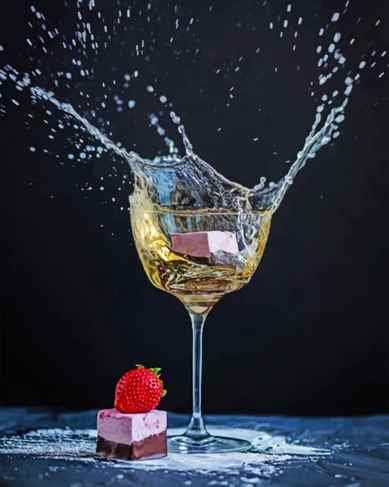Complementary Colors
What Color Is Lilac? What It Represents, Palette Ideas, and How to Use It
Are you looking to add an invigorating pop of lilac color to your next creative design? Whether you’re striving for that perfect soft touch or seeking a subdued pastel shade, check out everything you need to know about the gorgeous and enigmatic lilac color. Let’s dive in!
Table of Contents
What Color Is Lilac?
Lilac is a medium light shade of magenta . Our infatuation with the myriad shades, tones, and tints of the violet-purple family that it belongs to – whether it’s an amethyst lilac color , fuchsia pink, electric purple, or lavender, to name a few — has a long and beautiful history. Shakespeare described Cleopatra’s barge as, “Purple the sails, and so perfumèd that / The winds were lovesick with them.” The purple color family has historically been tied to regality, strength, and ethereality. The flowing imperial robes of the Byzantine Empire were often a shade of purple and they signed their edicts in purple ink. Even the phrase “born in the purple” is used to refer to children born into a reigning family.
Why is the purple color historically associated with regality? A lot of it comes down to the fact that it was so expensive to produce the color. Purple pigment goes back to the Phoenicians’ Tyrian purple in the first millennium B.C. It was developed from a species of sea snail now known as Bolinus brandaris. To harvest it, dye-makers had to extract purple-producing mucus from the snail’s shell and expose it to sunlight for a long period. It took 250,000 mollusks to yield just one ounce of purple, just enough to dye a single toga. Did you know that in ancient Roman days, wearing violet togas was the privilege of Caesar? Nero adopted a law punishing those who dared to wear violet by death.
Fortunately for the rest of us, the violet-purple color family became more approachable in the 1850s when the first synthetic mauve pigments were created. Violet became a commonly used color on Impressionist canvases, starting a color trend described as “violettomania.” Famous Impressionist painter Claude Monet described the true color of the atmosphere, saying “It is violet. Fresh air is violet.” And thus the lilac color, a pale violet shade with a pink hue, became commonly used. Everything from trees, forests, rocks, and water, to grass, the sky, a pond with waterlilies, and the atmosphere were often depicted in shades of violet in paintings by Pissaro, Monet, Renoir, and Cézanne.
The hexadecimal lilac color code is #c8a2c8 , and it is comprised of 78.43% red, 63.53% green, and 78.43% blue. Lilac has RGB values of R:200, G:162, B:200 and CMYK values of C:0, M:0.19, Y:0, K:0.22.
What Does the Lilac Color Represent?
Lilac is a versatile color, named after the lilac flower called Fyringia. It is similar to the color lavender (color code #e6e6fa, made of 90.2% red, 90.2% green, and 98% blue ), which is also aptly named after the lavender flower, Lamiaceae. Both lavender and lilac are shades of purple and violet, but lavender has a bluish tint, while lilac has a pinkish tint.
Color theory usually associates the lilac color with sensitive, charismatic, compassionate, free-spirited, and calm aesthetics. Lilac carries a creative, alluring energy, gently drawing the viewer’s eye in with a dreamy, almost visionary feel.
The lilac color was also one of the two colors (alongside Gen-Z Yellow) poised to steal the spotlight in 2018. At the start of the year, it was projected to be a rising popular pastel shade , stealing the spotlight from the ever-popular millennial pink color. Lilac is often seen as more grown-up than youthful pink, carrying with it a welcoming, calm feeling.
What Color Is Lilac?
Lilac is similar to lavender, pink, and violet. Lilac flowers display in many colors, but the color called lilac is usually in the violet shades, though a bit duskier than lavender. A feminine, maternal color that often appears around springtime and Easter, lilac is both cool and warm with a mix of blue and red.
Lilac carries the purple symbolism associated with the lighter shades of purple. Like lavender, it can be nostalgic. It goes well with black and dark green. For a lovely lilac mix, combine shades of lilac with greens, plums, and mauve.

Use Lilac Color in Design Files
When you plan a print design project, use CMYK formulations for lilac in your page layout software or select a Pantone spot color. For display on a computer monitor, use RGB values. Use Hex designations when working with HTML, CSS, and SVG. Among the available lilac shades are:
| Hex # | RGB | CMYK | |
| Lilac | c8a2c8 | 200,162,200 | 20,39,2,0 |
| Medium Lilac | c17ecd | 193,126,205 | 27,57,0,0 |
| Rich Lilac | b666d2 | 182,102,210 | 38,67,0,0 |
| Deep Lilac | 9955bb | 153,85,187 | 49,77,0,0 |
| Bright Lilac | 9962bf | 153,98,191 | 47,71,0,0 |
| French Lilac | 86608e | 134,96,142 | 53,70,20,2 |
Choose Pantone Colors Closest to Lilac
When working with printed pieces, sometimes a solid color lilac, rather than a CMYK mix, is a more economical choice. The Pantone Matching System is the most widely recognized spot color system and is popular with most commercial printing companies. Here are the Pantone colors suggested as best matches to lilac colors for print purposes:
| Color | Pantone Solid Coated |
| Lilac | 7437 C |
| Medium Lilac | 2572 C |
| Rich Lilac | 2582 U |
| Deep Lilac | 7441 C |
| Bright Lilac | 2074 C |
| French Lilac | 7661 C |
Because the eye can see more colors on a display than can be mixed with inks, some colors you see on the screen don’t reproduce reliably in print.



